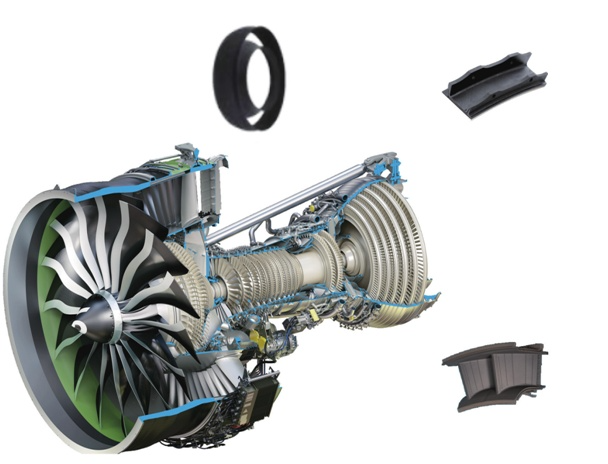As the "heart" of the spacecraft, the engine plays a key role in the development of aerospace technology. The engine is a complex and sophisticated high-end strategic equipment, but the material system that can meet the requirements of high temperature resistance, stable performance and long service life at the same time is very limited.
At this stage, the materials of high temperature structures such as combustion chambers and turbines of aerospace engines are still dominated by superalloys. After more than 40 years of development, the temperature resistance of metal materials represented by single crystal alloys has been greatly improved, but it is still far from the combustion temperature of the engine, and in the new generation of engines, the gap is gradually increasing.
As a lightweight and high-performance structural composite material, ceramic material is widely used in high temperature field. Its excellent high temperature performance makes it one of the candidate materials to replace superalloy materials in aerospace engines, especially in engine core engines.
According to a report on the website of the Russian "Izvestia" on the 18th, Russian engineers have developed the technology of making rocket engines with ceramics for the first time in the world. Such engines are more resistant to high temperatures than metal engines and are therefore more efficient.
Because ceramic materials are less dense, this would allow the rocket to put more cargo into orbit while using less fuel. The developers believe that ceramics can now be used to make turbines for various thermal machines in the energy industry.
"We made a palm-sized sample engine," said Ekipo's project manager for developing ceramic bonding technology. "There's nothing unusual about this thing, but no one in the world has ever built something like this." Engines. We learned how to splicing ceramics so that the seams are not obvious, and its strength is not inferior to the one-piece material.”
According to the researchers, if the turbine engine is made of ceramic, its efficiency will be more than 15% higher than that of the alloy engine.
Tests have shown that ceramic products made with the new technology can effectively resist the so-called thermal shock that occurs in liquid rocket engines, that is, the temperature difference from room temperature to nearly 2,000 degrees Celsius in one and a half seconds. Test reports showed that the engine samples survived more than 120 such thermal shocks. Experts point out that ceramic engines are not just for space. It can also come in handy in machine building, such as marine ceramic piston rings.
